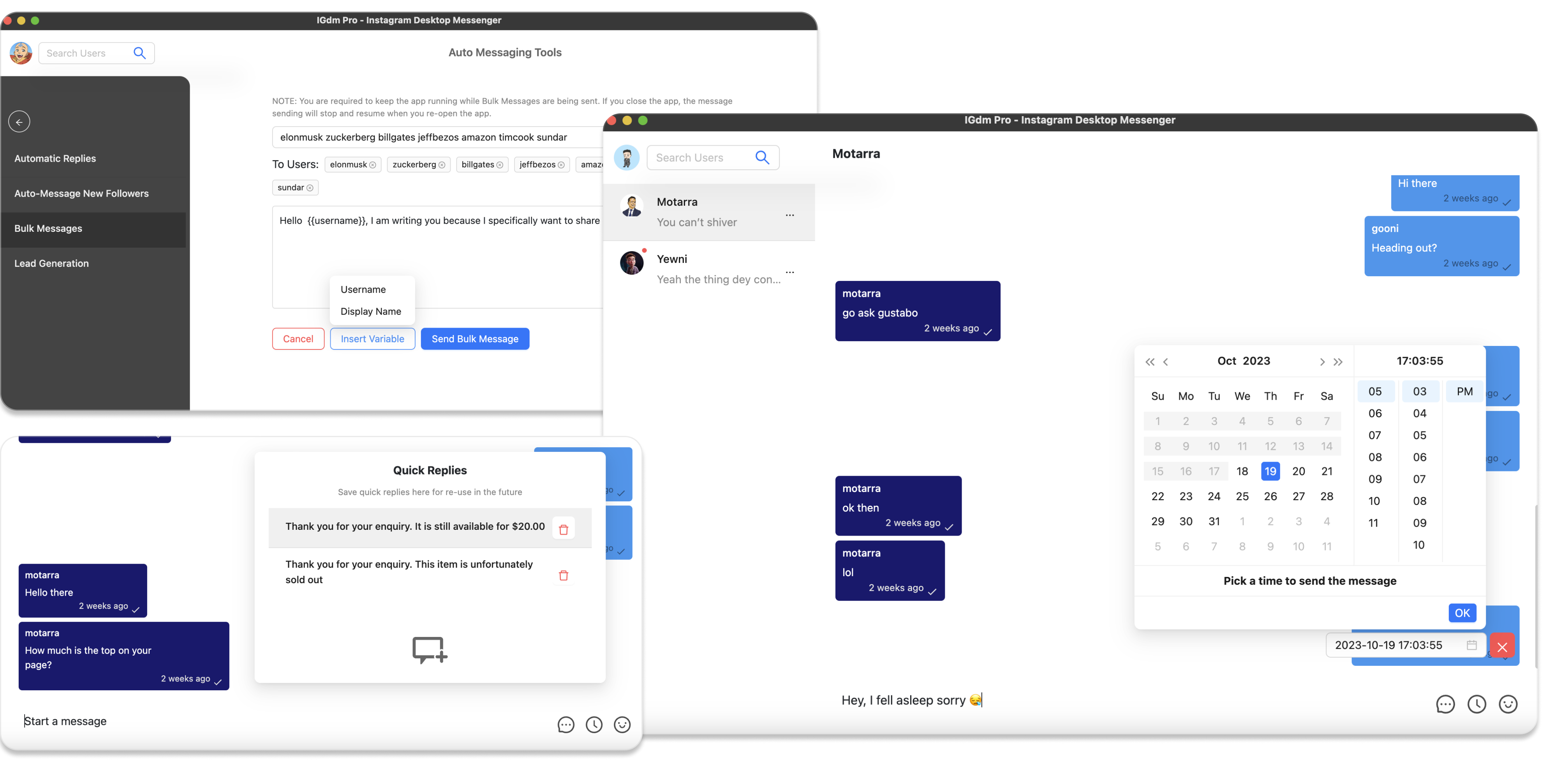How to Create Instagram Content Pillars for Client Brands
As a social media manager or agency, you know that a successful Instagram strategy is built on more than just pretty pictures. It requires a solid foundation that ensures consistency, relevance, and engagement. This is where content pillars come in. This guide will walk you through how to create effective Instagram content pillars for your client brands, helping you build a strategy that delivers results.
Table of Contents
- What Are Instagram Content Pillars?
- Why Your Client's Brand Needs Them
- A Step-by-Step Guide to Creating Content Pillars
- Streamlining Communication with IGdm Pro
- Conclusion
What Are Instagram Content Pillars?
Instagram content pillars are 3-5 core themes or topics that a brand consistently talks about. These pillars are the foundation of your content strategy, ensuring that everything you post is aligned with the brand's identity, values, and the interests of its target audience. Think of them as the main categories of your brand’s story.
Why Your Client's Brand Needs Them
Implementing content pillars is a game-changer for managing a client's Instagram presence. Here’s why:
- Ensures Brand Consistency: Content pillars keep your messaging focused and consistent, which is crucial for building a strong, recognizable brand.
- Streamlines Content Creation: Say goodbye to the daily "What should I post?" panic. With defined pillars, you'll always have a well of ideas to draw from.
- Boosts Audience Engagement: By focusing on topics your audience cares about, you create content that is more likely to resonate, leading to higher engagement.
- Establishes Authority: Consistently posting about specific topics positions your client as an expert in their niche.
A Step-by-Step Guide to Creating Content Pillars
Step 1: Deep Dive into the Client’s Brand
Before you can create content pillars, you need to thoroughly understand your client's brand. Schedule a discovery session to discuss:
- Brand Mission and Values: What is the brand's purpose?
- Target Audience: Who are they trying to reach? What are their pain points and interests?
- Unique Selling Proposition (USP): What makes the brand different from its competitors?
Step 2: Identify 3-5 Core Themes
Based on your research, brainstorm broad topics that align with the brand and its audience. For example, a sustainable fashion brand's pillars might be:
- Eco-Friendly Materials
- Ethical Production
- Styling Sustainable Fashion
- Behind the Scenes
- Community & Activism
Step 3: Break Down Pillars into Subtopics
Once you have your pillars, break them down into more specific content ideas. For the "Styling Sustainable Fashion" pillar, subtopics could include:
- "How to style a linen shirt for three different occasions."
- "A Reel showcasing a week of sustainable outfits."
- "A carousel post on capsule wardrobe essentials."
Step 4: Diversify Content Formats
Plan how you'll present these subtopics across different Instagram formats:
- Feed Posts: High-quality images, carousels, and infographics.
- Reels: Short, engaging videos for tutorials, tips, and behind-the-scenes content.
- Stories: Interactive content like polls, Q&As, and quizzes to engage the community daily.
Step 5: Create a Content Calendar
Map out your content pillars and subtopics on a content calendar. This will give you and your client a clear overview of the month ahead and ensure a balanced mix of content.
Streamlining Communication with IGdm Pro
A strong content strategy will inevitably lead to more engagement, including a higher volume of Direct Messages (DMs). Managing these conversations efficiently is crucial for nurturing leads and building a community. This is where a tool like IGdm Pro can be invaluable.
As an agency or manager, you can use IGdm Pro to:
- Manage Multiple Client Accounts: Seamlessly switch between client inboxes from a single desktop application.
- Automate Responses: Set up automated replies for common questions related to your content pillars (e.g., "Where can I buy this?"), ensuring prompt customer service.
- Organize Conversations: Use labels to categorize DMs by client or topic (e.g., "Client A - Lead," "Client B - Support"), keeping your workflow organized.
- Schedule Follow-ups: Use message reminders to follow up on potential leads or collaborations that arise from your content.
By integrating a powerful DM management tool into your workflow, you can efficiently handle the increased engagement that your new content pillar strategy will generate, further proving your value to your clients.
Conclusion
Creating Instagram content pillars is a strategic move that brings clarity, consistency, and efficiency to your client's social media presence. By taking the time to define these core themes, you can build a content strategy that not only resonates with the target audience but also establishes your client as an authority in their niche. Combine this with smart tools to manage the resulting engagement, and you have a recipe for a successful and scalable Instagram marketing service.
